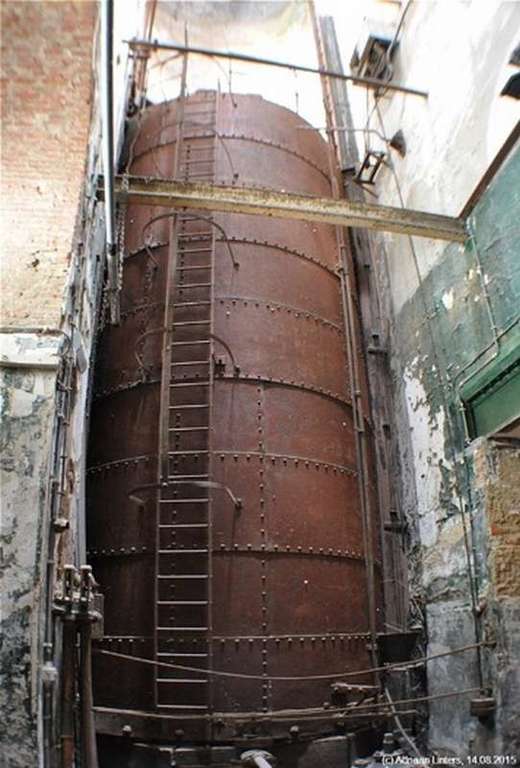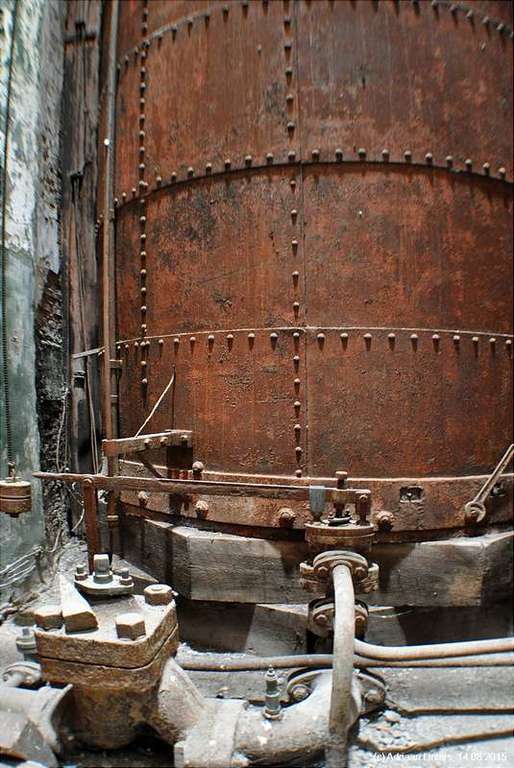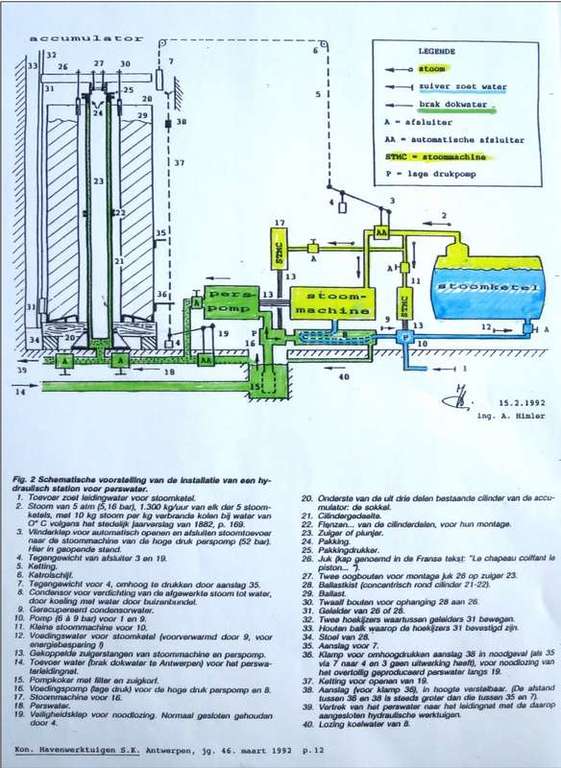Because of the waiver of the toll for transport along the river Scheldt in 1863, the port of Antwerp experienced a great surge in freight transport and the need arose to install cranes that were powered by a central energy source. Only one energy system qualified: hydraulic energy, developed by William Armstrong in 1846. At the heart of such system is the power station, where cold water is put under pressure.
The core of the Zuiderpershuis was formed by the steam boilers, the steam engines and the accumulators. In the steam boilers, water was transformed to steam and energy. The steam pipes were connected to steam engines that could put 1820 litres of water under pressure every minute. The machines also powered the pumps that transferred water from the dock to the water tank. From there, the water flowed to the high-pressure pump where it was put under pressure (50 bar). Hereafter, the water arrived in the cylinder of the accumulator.
The accumulator can be compared to a bicycle pump (held upright) in which water is being pushed from the bottom causing the piston and handle (comparable to the accumulator’s 7 metre/100 ton counterweight) to rise. Arrived at the top position, a switch would shut down the pressure pump. When the usage of pressurized water would lower the piston, the pressure pump would be activated again.


